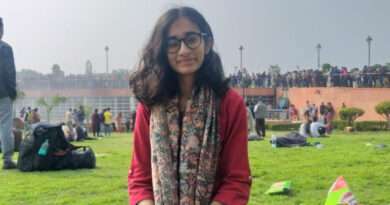Book Review-Lihaaf
By Suhasini
On a dreary Monday afternoon, when the heat licked lines of fire along my neck I stared back with equal heat at the words written cohesively, to soften the blow of a powerful punch—a punch Ismat Chughtai had for the readers back in 1942. I do not know the cause, and I can only work on assumptions without much pre-existing data, why she chose to write this. What compels a writer to write exactly, the bravery that every dot on ink carries—my mother once told me words could move mountains; and it did.
On more forlorn days, I would secretly wish to understand Urdu just to check I haven’t lost words in the translation to the language my country should’ve despised but here I was again, drinking words of a small narrator who didn’t know any better. Ismat talked about women’s sexuality like someone from 21st century west had whispered into her ears, Begum Jaan was lonely and Begum Jaan wanted the Nawaab’s attention. The nawaab was too busy; the nawaab thought his Begum was a possession to be horded. A pet, and like any other women who’s choices were limited to which color of wristlet she wanted, there is nothing much a rich and beautiful Begum could do then. Chughtai might have scoffed while writing this: a marriage of convenience, a marriage without reasons. There was this far-away dream of having a single right to dissent back in ’42 and yet Chughtai presented unhindered words—as a survivor of subjugation, as a woman—about the oppressive nature of Indian society.
In careless reading I wondered if a man would be introduced soon and was in a pleasant gut-wrenching way surprised to see the narrator explaining with much affront, about the maid-servant. She explored further, to point the physical difference between Begum Jaan and Rabbu’s and the child-like arrogant manner somehow that reminded me of my old prejudices.
The lihaaf, the cover had different meaning in different part: For the nawaab, Begum Jaan was the lihaaf that redacted his pedophilic tendencies for “slim waisted young boy students” . For the Begum Jaan, the physical Lihaaf shadowed her explicit sexual relation with her maidservant and the nine-year old narrator who can barely understand the desire of body was a lihaaf for Chughtai to explain in plain her story.
When I read it for the second time, when I was sixteen, a cold dread somehow settled in my belly. There, for everyone, it was written in plain daylight the trauma and terror inside the nine-year old narrator’s mind. The story takes a well meaning twist (albeit a distasteful one, in my own very weird opinion) when Begum Jaan’s attention turns towards the little narrator. It starts innocently enough but the precipice of being outrageously sinister just hangs around like a mist—the narrator is confused, she doesn’t understands the desire of adult—or that someone can manipulate her body for their own pleasure. Begum Jaan counts her ribs and the closeness makes the Narrator dizzy, makes it feel all wrong and just like any other adult who might have faced such revolting situations, might understand the plight and horror in her voice—the quivering mess of a child can be physically felt through the words.
In certain moments I had to stop reading, take a very shaky breath and ruminate on the story. Is this still progressive? I think it is. It’s a story, written by a woman to showcase not only that Women experience and deep and unbounded lust but, in a shocking twist unveils how a child experiences languages and touches they are not meant to. That there are barely words and actions she could use to describe the repulsive act, that she barely even comprehends the meaning of romance—let alone lust.
To be used against one’s own will and to be scared of someone who apparently ‘loves’ you.
There is of course, before I forget to mention—the class distinction between Rabbu and Begam jaan. Begum, much like her husbands, abides to patriarchy pretty nicely. She is the affluent, husband worshiping wife that a man desired but insider closed doors she seems to forget everything but her ‘itch’. In the end, the relationship between Begam and Rabbu is nothing more than transactional—that she is nothing more than a pair of hands that satisfied the itch and the Begum nothing more than a power hungry upper-class predator whose main aim is to satisfy her itch. Even the narrator is only indulged by the Begum when she “scratches her back” or lessens the itch.
To conclude, Lihaaf didn’t appear to be a queer-friendly literature—but in terms of being progressive and a feminist text, it does tick all the criteria. Nevertheless, the real feminist of the story cannot be Begum Jaan but the nine year old narrator who, in defiance of her own mother’s parenting, can think of an egalitarian, open relationship with her brothers and other male friends–for which she was punished and yet she stood her ground.



